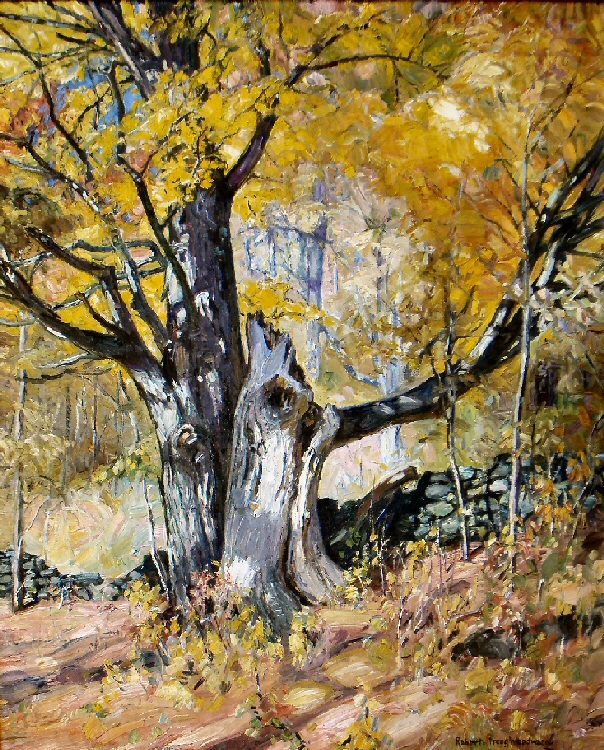Quick Reference
Painted about 1932.
On mountain road between
Adamsville and North Heath
Colrain, Mass.
Oil on Canvas
Landscape
Trees, Woods
30" x 36"
Macbeth Galleries (NYC), 1932
Williston Academy, 1933
Northfield Seminary, 1933
Williams College, 1933
Mrs. George Bradford
NA
Featured Artwork: The Golden Month
RSW's Diary Comments
"Painted about 1932. Old weather beaten maples in October on mountain road between Adamsville and North Heath. Owned by Mrs. George Bradford Clements of Norton, Massachusetts."
Comments in a notebook by RSW:
"Sold October 30, 1933 to Mr. and Mrs. G. B. Clements, Norton, Mass. for $400."
Editor's Note:
Can anyone else see the "Golden Spiral" design of this painting? The Golden Spiral is based on the golden ratio that determines symmetry. Aesthetically, it is a beauty standard. Woodward loved to name his paintings poetically in a marriage of opposites, usually combining the literal and the figurative and so we believe their is more to "Golden' being in the name than its coloring. See the Golden Spiral Composition to this painting HERE. And for more on the notion of beauty see the next section below for more.
Additional Notes
 The above photograph and the high
resolution photo were provided courtesy of the current owner.
The above photograph and the high
resolution photo were provided courtesy of the current owner.
 We offer our many thanks and appreciation.
We offer our many thanks and appreciation.
Editor's Note:
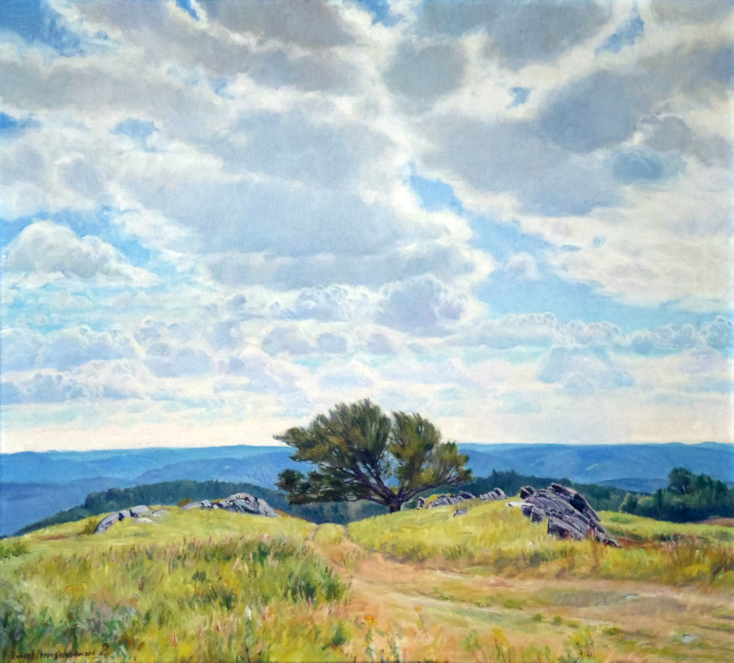
 Heights of Heath#2 One of the best
Heights of Heath#2 One of the best
examples showing the split in the Beech Tree in
Heath. The lightning hit the other side of the tree.
We cannot NOT say something about the subject of this painting. This broken yet thriving tree
is in many ways a commentary by the artist. One is that beauty can also be seen in what is deem unattractive or unpleasant,
as well as the inspiring principles of overcoming tragedy- life finds a way. Can anyone suggest this painting is not lovely and
beautiful?
The Beech Tree on Burnt Hill in Heath (MA) is another example of Woodward's study of this subject. In fact,
it is believed by us that the Beech Tree is a symbolic self portrait of the man. How he
sees himself, his life. The solitary, exposed, wind blown, ancient tree, surround by unforgiving rock-ledge, was once also struck
by lightning and split in the middle (like the gun accident that left him paralyzed) thrives despite it all. It stands proudly in
the face of all the elements appearing like someone with their arms raised above their head in a "V" for victory. It is transcendent
scene.
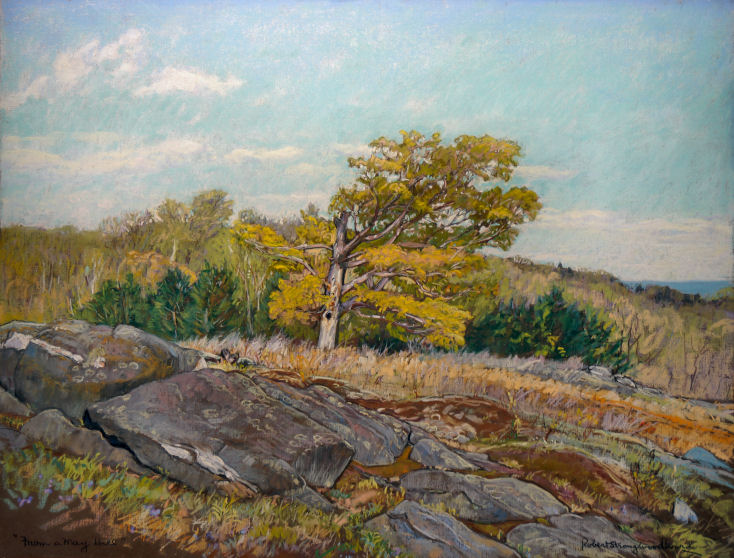
 From a May Hill
There is another broken tree to
From a May Hill
There is another broken tree to
the left of this one shown in Double Victory and
Where Four Stone Walls Used To Meet
Also on the same pasture, just to the north of the beech tree is another same tree, actually two of them,
broken in half, yet still producing leaves and showing signs of life seen in the picture to the left. Is this ugly? You tell us. Should
these things not be painted because they are not perfect?
There is also the "man-made" stonewall in The Golden
Month that has partially collapsed over time. The stonewall also seems to hold an importance to Woodward because four of
them appear in the painting Where Four Stone Walls Used To Meet. The stonewalls are what was made with the stones
early settlers had to clear from the fields before they could plant their crops. What does it say that some of those walls are falling
apart or disappearing? The walls embody, in a lot of ways, the tell-tail signs of time both figuratively and literally in linear form.

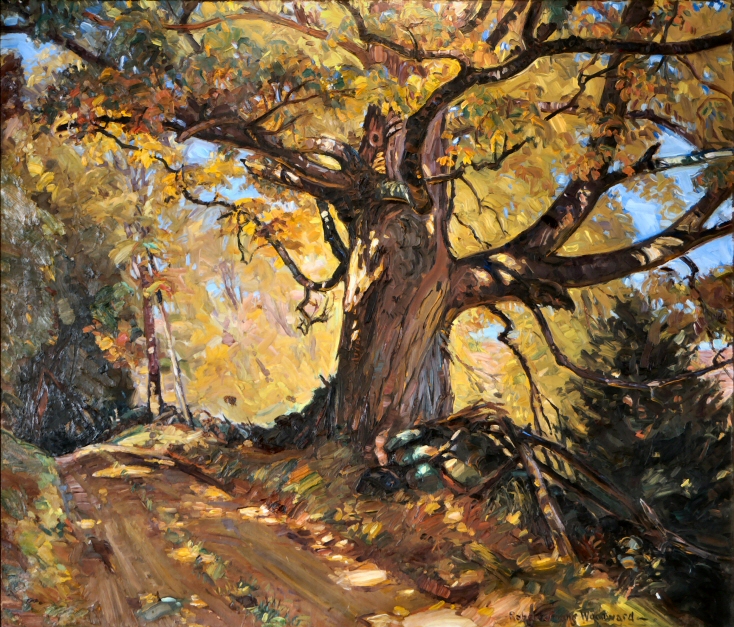
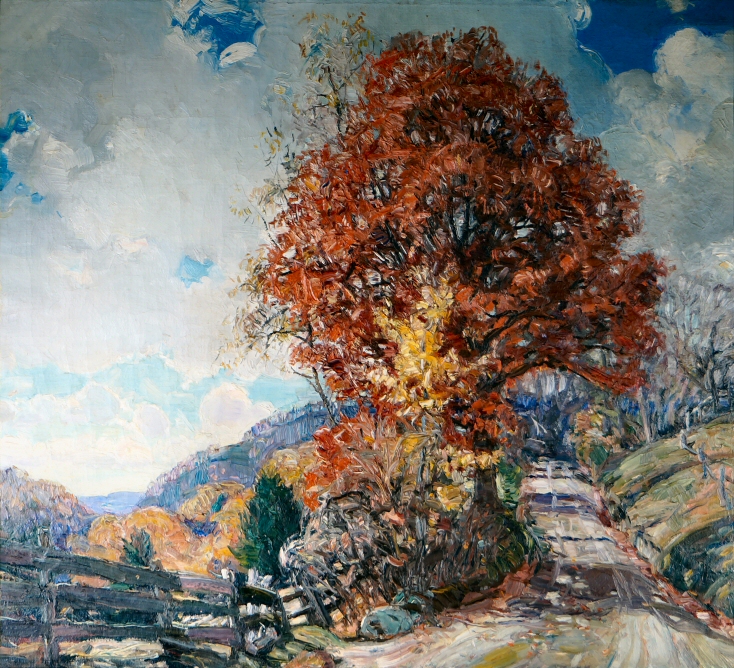
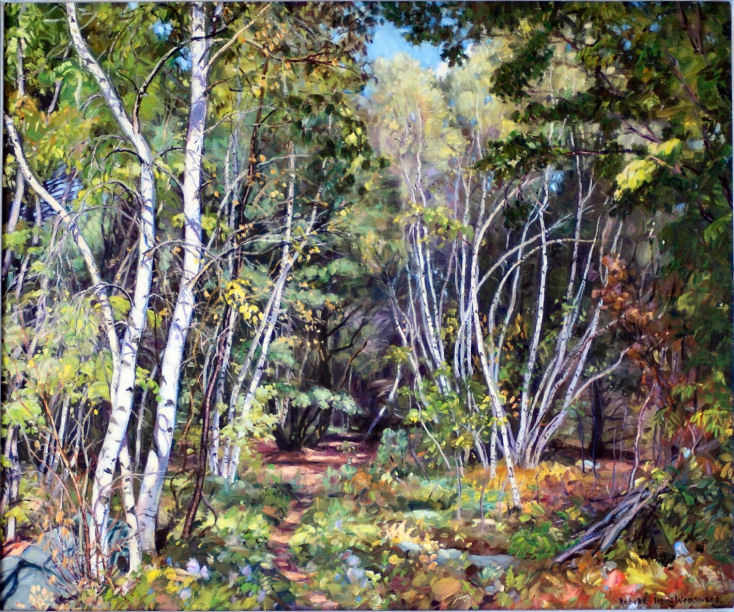
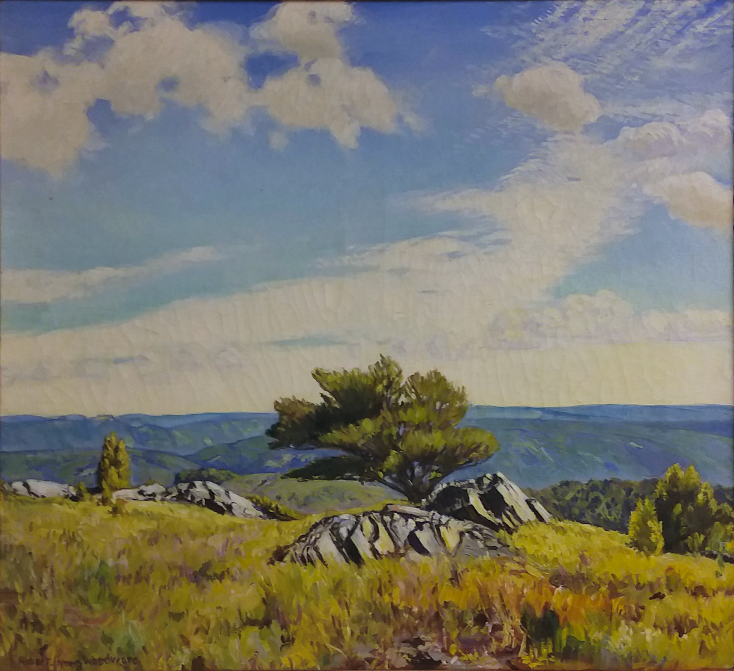
.png)

